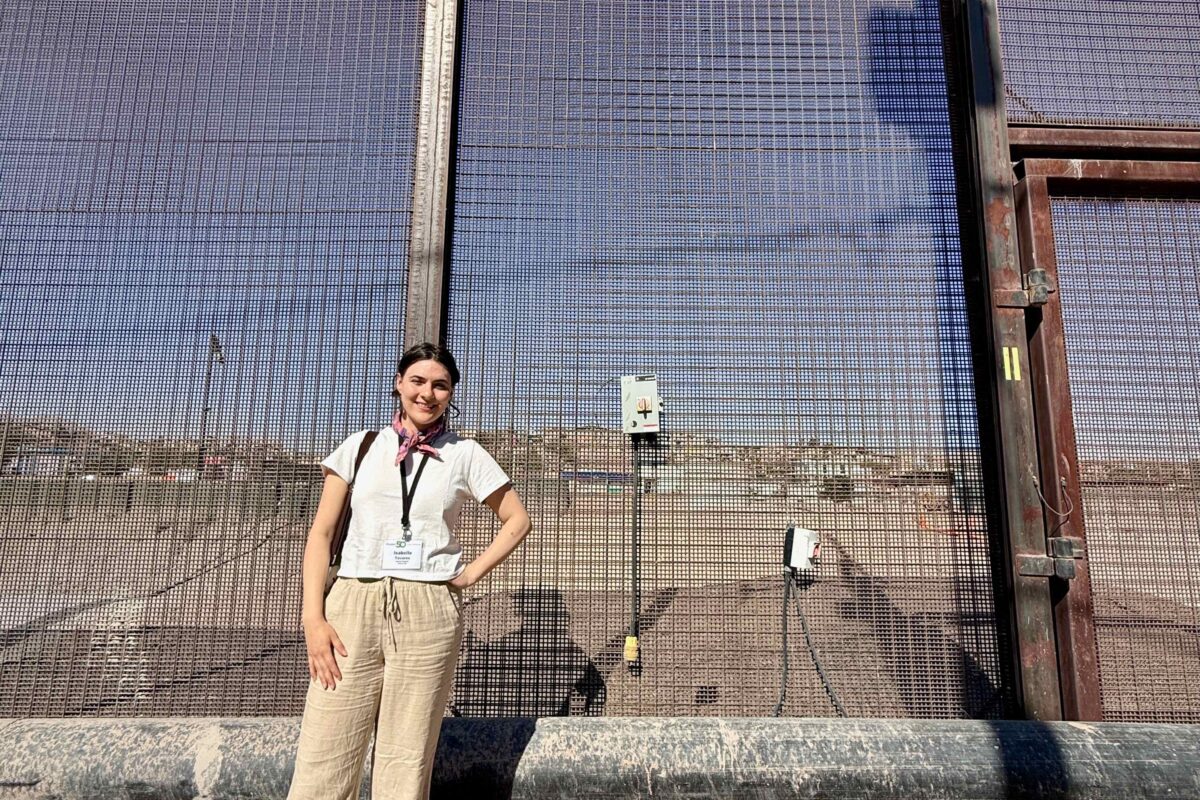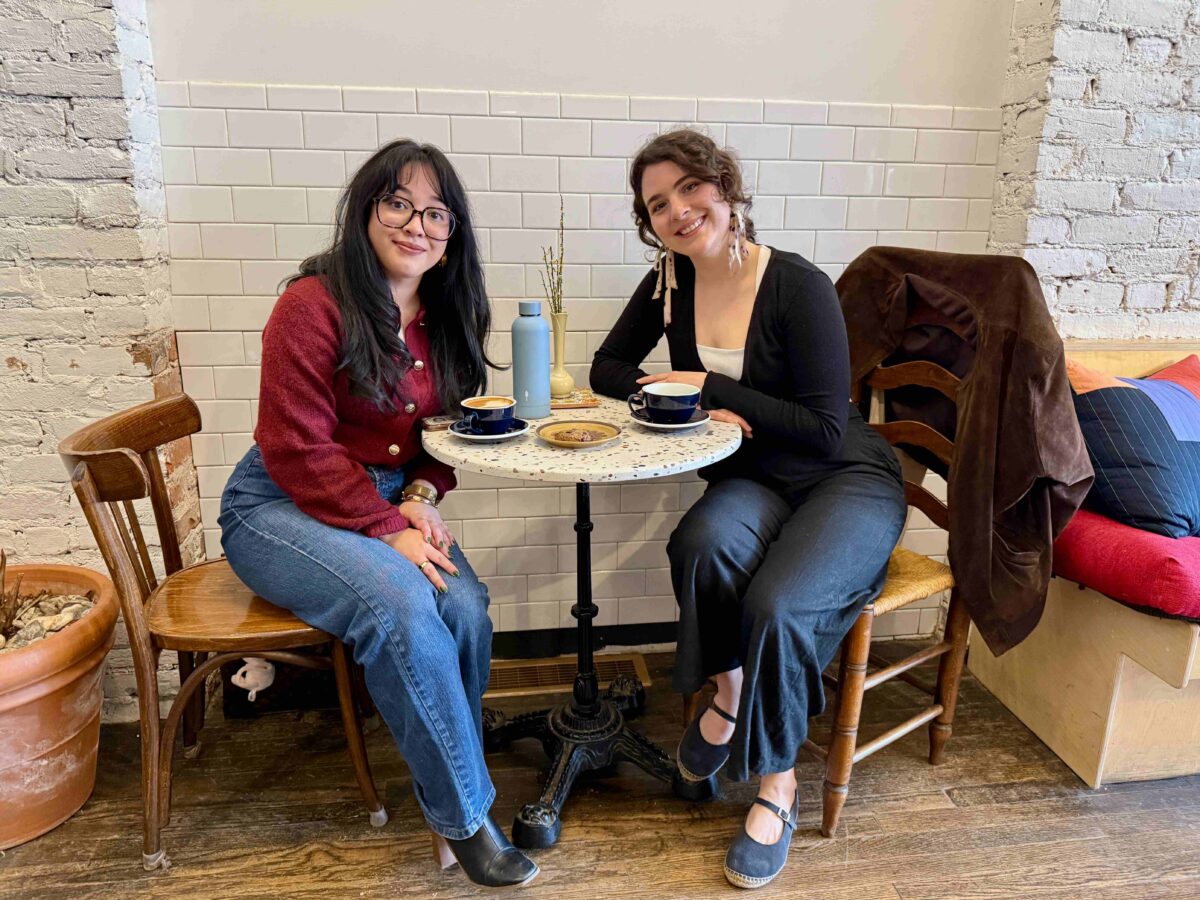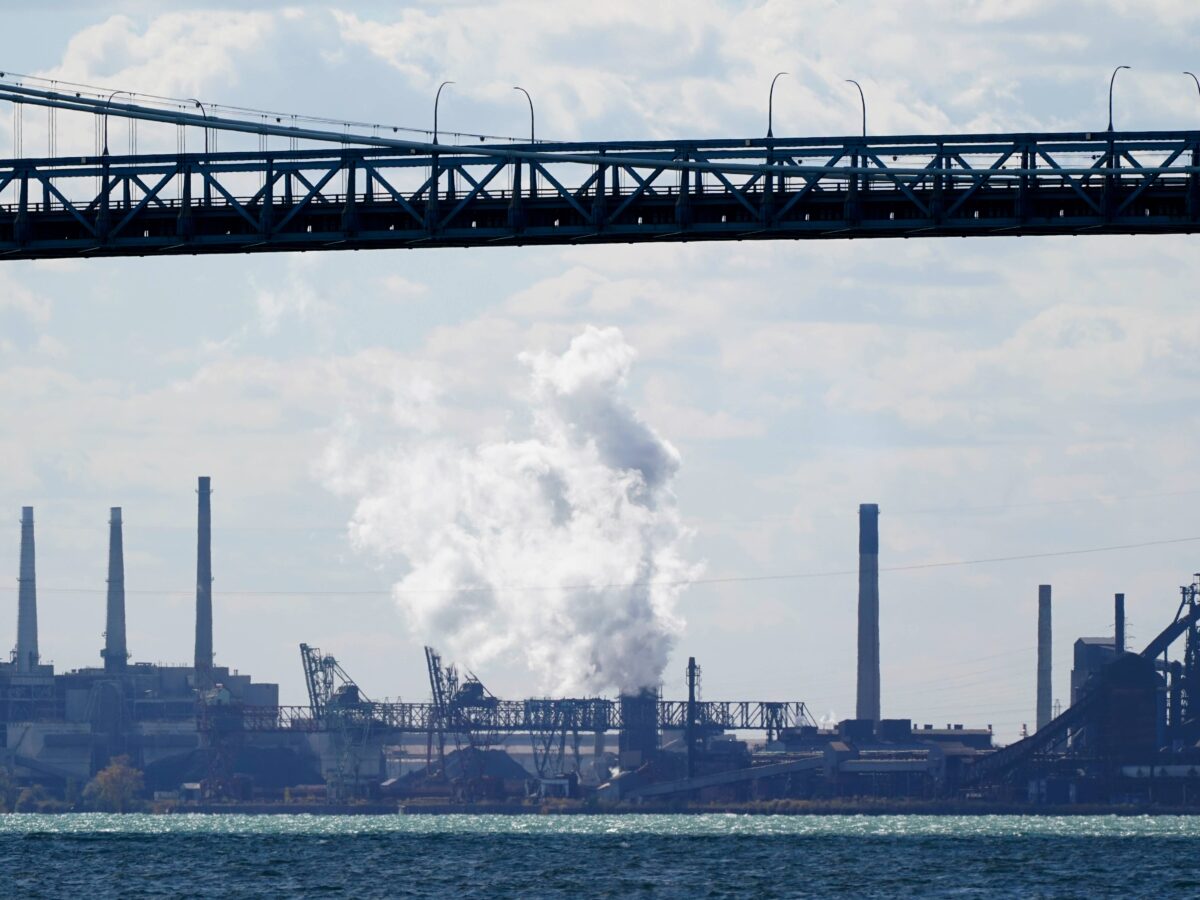Overview:
-Planet Detroit reporter participates in immigration reporting workshop in El Paso.
-The workshop serves as a reminder of the importance of protecting sources and striving to humanize and truthfully report these urgent narratives.
-At least 176 migrants died in the El Paso Border Patrol Sector in 2024.
With one foot in the United States and the other in Mexico, I stood on the pedestrian bridge between El Paso and Ciudad Juárez, and thought of home: Southwest Detroit. The residents, my neighbors, who live between cultures, two languages, two systems, who are from allí y alla – and are constantly translating who they are to the world around them.
From May 19 to 21, I traveled to El Paso for an on-the-ground immigration reporting workshop through the Poynter Institute, a global nonprofit bolstering journalists’ professional development. El Paso, like Detroit, is a city shaped by migration.
My Uber driver from the airport was a Cuban man who had arrived in the U.S. a year ago from his rural hometown outside of Havana. He said his life is better here, but lonely. I rode with Jon Greenberg, project lead of Poynter’s Beat Academy and workshop lead.
As we whizzed past the bumper-to-bumper traffic headed to Fort Bliss, Greenberg pointed out the growing military presence in El Paso. On May 1, the Pentagon announced the base’s expansion into the Texas national defense area, a nearly 53-mile-long sliver of land from El Paso to Fort Hancock, the military newspaper Stars and Stripes reported. The first national defense area was established in New Mexico in April.
This change – turning federal lands into military base property – allows U.S. troops to detain migrants and transfer them to border security officials and federal prosecutors who can charge them with trespassing on military property, according to the Texas Tribune.
MORE REPORTING FROM ISABELLE TAVARES
Café y Chisme No. 6: Samantha Cerwin’s Detroit fashion startup has sustainable twist
Samantha Cerwin, founder of BeReworn, launched a sustainable fashion platform with support from TechTown and Venture 313 that fosters community connections through events and forums.
Balancing safety and community in Southwest Detroit: Lessons from Clark Park’s revitalization
In Southwest Detroit, Clark Park stands as a testament to community resilience, evolving from a site of drug activity and violence into a vibrant neighborhood hub. This transformation, driven by grassroots initiatives and city collaborations, highlights the power of community-centered policing, though it sparks debate over police roles in public spaces.
EPA offers Clean Air Act exemptions from Trump, and one of metro Detroit’s top polluters applies
A new EPA policy under the Trump administration could let over 500 facilities nationwide sidestep pollution controls for two years, a move that critics say endangers millions of Americans.
Immigration: An urgent topic for journalists
During a panel at the Poynter workshop, a reporter from Mexico rhetorically asked the group: “So, why should we care?”
At least 176 migrants died in the El Paso Border Patrol Sector in 2024, according to federal government data collected by No More Deaths, a migrant aid and advocacy group in Tucson, Arizona, the El Paso Times reported.
Aside from the humanitarian crisis, what’s happening here reflects the erosion of legal protections across the board. Immigrants serve as early indicators of broader societal issues. The Trump administration has fast-tracked deportations without due process in, for example, the case of Kilmar Abrego Garcia, and plainclothes ICE officers have detained outspoken students in the streets.
When a president begins to ignore the rule of law, what, and who, is next?
As a journalist covering environmental and public health issues in a community shaped by immigration, that question landed hard. Climate and immigration are among the most urgent stories, and are deeply connected.
Immigration organizations we met with are overwhelmed, underfunded, and hesitant to speak with journalists for fear it could jeopardize their ability to serve the community.
It’s a valid fear, but we need to take a close look at what it means when immigration organizations must weigh their risks before speaking with a journalist.
Journalists must protect their sources, now more than ever, and honor their decisions not to speak. It’s a reminder I’ll carry into my work in Southwest Detroit, where immigration issues are often intertwined with environmental justice, labor rights, and public health. This workshop left me thinking about how to tell stories that humanize, that tell the truth, without jeopardizing sources.
Our group of journalists — TV anchors, print reporters, radio producers — was a curious, witty, empathetic bunch. After a long day of panels and reporting, we crossed into Juárez for an evening. The footbridge was quiet, with a steady stream of families carrying groceries, teenagers kidding around with schoolbags on their backs, and a priest who gives service on both sides of the border.
These stories may take longer to tell, but they are no less urgent. Back in Detroit, I return with a deeper understanding, and a greater sense of duty. We must pay attention. We must tell these stories with care.





